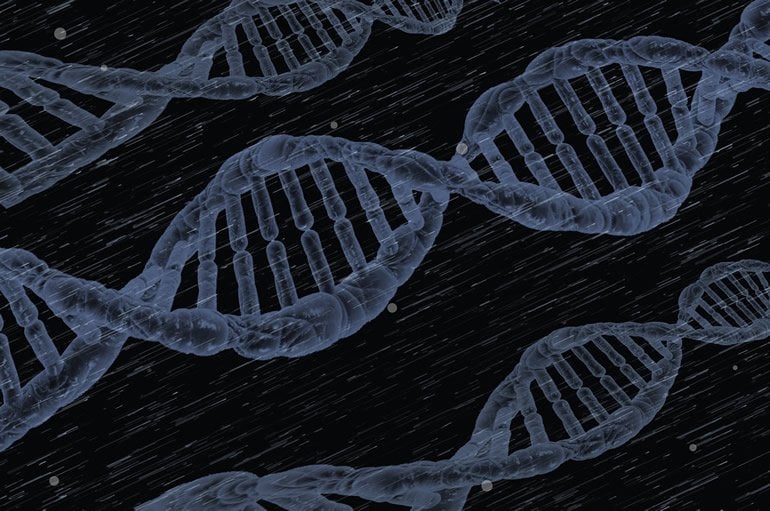Summary: Study describes how the loss of the SMARCB1 gene negatively impacts neural development and promotes tumor growth in ATRT, a rare and fast-progressing form of pediatric brain cancer.
Source: UCSD
Atypical teratoid rhabdoid tumors (ATRT) are a rare, fast-growing form of brain cancer that usually strikes children three years and younger, though they can occur in older children and adults. There are multiple treatments, but no definitive standard of care and long-term survival is poor.
The cause of ATRT is primarily linked to inactivation of a gene called SMARCB1, part of a larger complex that helps regulate gene expression and developmental processes. In a study published online September 10, 2020 in the journal Genes & Development, an international team of scientists, led by researchers at University of California San Diego School of Medicine and the San Diego Branch of the Ludwig Institute for Cancer Research, describe how the loss of the gene negatively impacts neural development and promotes tumor growth.
“Previous research has established that, unlike some cancers, ATRT is predominantly associated with the functional loss of a single gene — SMARCB1 — which leads to tumor development through changes in how genes are expressed rather than the combined effect of multiple gene mutations,” said senior author Frank Furnari, PhD, professor of pathology and Ludwig San Diego member.
“ATRT is a very deadly cancer with very few effective therapies, which are complicated by the negative effects of radiation upon the child’s cognitive development. We need targeted therapeutics and to create those, we need to better understand the mechanisms driving ATRT.”
Led by Furnari and first author Alison Parisian, a graduate student in Funari’s lab, the team prompted the loss of SMARCB1 in human induced pluripotent stem cells, then directed the iPSCs to develop into neurons or into cerebral organoids — complexes of diverse nerve cells and glia that mimic functional aspects of the developing brain in miniature.

In doing so, they identified an interaction between the loss of SMARCB1 and neural differentiation pressure, which resulted in both a resistance to final differentiation and a defect in maintaining normal cell health that showed similarity to patient tumors.
“With this new information in hand,” said Parisian, “our plan is to use our ATRT model and look for therapeutic targets that will cause these tumors to fully differentiate and therefore stop growing, which could prove to be an effective future therapy for ATRT.”
Co-authors include: Tomoyuki Koga, Ludwig Institute for Cancer Research San Diego Branch and University of Minnesota; Shunichiro Miki, Ludwig Institute for Cancer Research San Diego Branch; Pascal D. Johann, Hopp Childrens Cancer Center, German Cancer Consortium and University Hospital Heidelberg; Marcel Kool, Hopp Childrens Cancer Center, German Cancer Consortium and Princess Maxima Center for Pediatric Oncology, the Netherlands; and John R. Crawford, UC San Diego.
About this brain cancer research article
Source:
UCSD
Contacts:
Scott LaFee – UCSD
Image Source:
The image is in the public domain.
Original Research: Closed access
“SMARCB1 loss interacts with neuronal differentiation state to block maturation and impact cell stability” by Frank Furnari et al. Genes & Development.
Abstract
SMARCB1 loss interacts with neuronal differentiation state to block maturation and impact cell stability
Atypical teratoid rhabdoid tumors (ATRTs) are challenging pediatric brain cancers that are predominantly associated with inactivation of the gene SMARCB1, a conserved subunit of the chromatin remodeling BAF complex, which has known contributions to developmental processes. To identify potential interactions between SMARCB1 loss and the process of neural development, we introduced an inducible SMARCB1 loss-of-function system into human induced pluripotent stem cells (iPSCs) that were subjected to either directed neuronal differentiation or differentiation into cerebral organoids. Using this system, we identified substantial differences in the downstream effects of SMARCB1 loss depending on differentiation state and identified an interaction between SMARCB1 loss and neural differentiation pressure that causes a resistance to terminal differentiation and a defect in maintenance of a normal cell state. Our results provide insight into how SMARCB1 loss might interact with neural development in the process of ATRT tumorigenesis.






